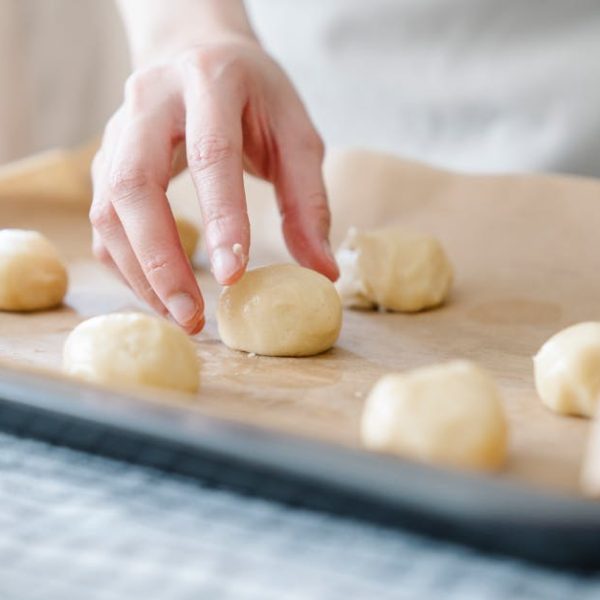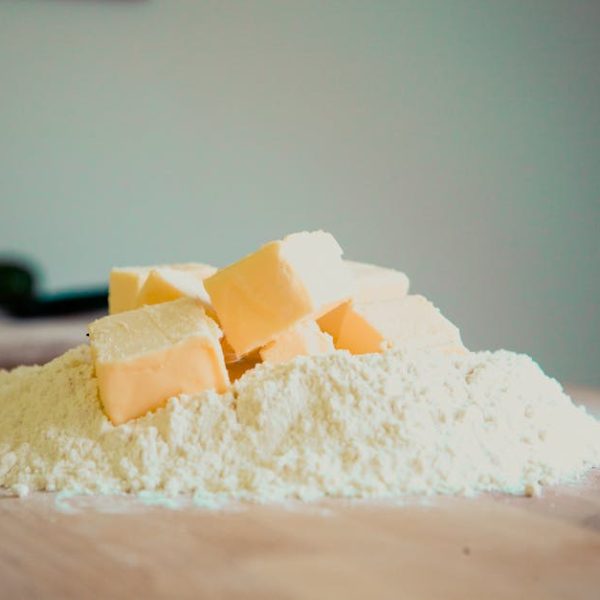There he is – the last piece of your favorite bakery bread poised regally on the dining table. But alas! It’s as hard as a hockey puck, relegated to a pitiful fate – the trash bin. Doesn’t it pair up with your coffee, double up as a quick sandwich, or even fulfill late-night cravings, courtesy bread and butter pudding? Then how can you let it meet such a sorry end!
Let’s equip you with ingenious life hacks to extend the longevity of your hearty loaves. While ensuring your bread remains in the perfect state might seem a Herculean task, we’ve boiled it down to some simple yet effective bread storage strategies.
Understanding the Basics of Bread Freshness
Bread, in its simplest form, is a blend of water, yeast, flour and salt, each playing their part in leading to the eventual stale state if not stored appropriately. Cut into its crumb structure, and you’ll uncover how its porous character makes it a moisture magnet, leading to the dreaded bread staleness. As bread stales, it loses its moisture. This process speeds up dramatically when stored at room temperature.
✔️ Pro Tip: Bread staleness channels through two routes – through moisture loss and the realignment of starch molecules. Thus, optimizing moisture and temperature conditions are vital to keeping your bread fresh, soft, and delicious longer.
The Dos and Don’ts of Bread Storage
Get ready to revise your bread storage techniques by following these golden rules that ensure you aren’t unwittingly hastening your bread’s path to staleness:
- Never store bread in the refrigerator: Contrary to popular belief, refrigerators are your bread’s archenemy. The refrigerator’s cool temperature accelerates the starch realignment, turning your bread stale quicker.
- Steer clear of plastic bags: Plastic bags retain the bread’s humidity, leading to a damp crust, and breeds molds.
✔️ Best Practice: Embrace the age-old technique of storing bread in a cotton bread bag or a clean kitchen towel. It strikes an optimal balance between retaining essential moisture and encouraging airflow.
Utilizing Freeze for Longer Bread Shelf-life
Befuddled as your freezer plays a villain to bread freshness? Turns out that while refrigerator temperature expedites bread staleness, freezing bread arrests it. Freezing can be your go-to strategy for store-bought bread or homemade ones, which lack the preservatives to fight off molds. However, it’s not without its share of drawbacks, which include freezer burn if not packed well or a slightly altered texture post-thawing.
Creative Bread Storage Hacks
If creativity could preserve bread freshness, consider it done! Whether it’s a DIY trick using things lying around your kitchen or a nifty accessory, here are a few hacks to keep your bread fresh:
- Ditch plastic bags for breathable fabrics: Let your bread breathe too! Using breathable fabrics like cotton bags or linen bread bags balances moisture retention and air circulation.
- Bread boxes hit a homerun: From vintage wooden boxes to modern stainless steel variants, bread boxes ensure an optimal humidity level, keeping your crusty bread crusty and the softer ones soft.
✔️ Best Practice: A dual-way ticket to freshness is using a bread bin with holes or slats. This allows for an ideal balance of ventilation and moisture control, ensuring your loaves stay fresh for longer.
Choosing the Right Bread Bin for your Kitchen
Bread bins have maintained their charm and functionality, seamlessly fitting into modern and traditional kitchens alike. They work miracles in preserving bread freshness. However, before diving into the market for a fancy bread bin, here are a few considerations:
- Material: Stainless steel, wood, or ceramic, each has its pros and cons. Choose according to your kitchen’s aesthetics, bread storage needs, and maintenance capabilities.
- Size: Opt for a bread bin that accommodates your usual loaf size without cramming it in.
- Ventilation: A well-ventilated bread bin ensures that your bread gets an optimum balance of air and moisture.
| Material | Pros | Cons |
|---|---|---|
| Stainless Steel | Durable, rust-resistant, suits modern kitchens | Can be prone to smudges and fingerprints |
| Wood | Natural, good insulation, suits traditional kitchens | Requires regular maintenance to prevent mold |
| Ceramic | Aesthetic appeal, good at maintaining temperature | Can be bulky, delicate |
✔️ Pro Tip: Once you’ve found your perfect bread bin, remember to clean it regularly. Neglecting this step could lead to unwanted growths that could spoil your fresh loaf.
Reviving Stale Bread: Tips and Tricks
Even the best bread storage hacks can’t prevent an eventual turn to staleness. However, there are clever tricks like these to breathe new life into your stale loaf:
- Oven revival: Sprinkle some water on your bread and set it in a preheated oven. The warmth will restore crispness, and the moisture helps soften the inside.
- Microwave magic: Wrap your bread in a damp paper towel and zap it in the microwave for 10-15 seconds. This effectively steams the bread, rehydrating it.
✔️ Best Practice: Keeping tabs on your bread consumption habits helps you buy just the right amount needed, preventing both stale bread and wastage.
Myths and Realities about Bread Storage
Can you differentiate between fact and fiction when it comes to storing your loaf? Here are a few common myths demystified:
- Keeping Bread In The Fridge Is Best: Thanks to rampant misinformation, many people believe that the cold environment of a refrigerator extends the bread’s freshness. However, refrigerators accelerate the process of the bread going stale.
- All Bread Bins Are Equal: Contrary to popular belief, not all bins work similarly, and the material has a significant role in preserving freshness.
✔️ Pro Tip: Enhance your bread storage game by keeping yourself informed with science-backed facts.
In conclusion, bread storage doesn’t have to be rocket science – a little common sense, some clever hacks, and the right tools can easily do the trick. Here’s to ensuring your favorite bakery bread never meets another sorry end. Happy bread saving!
Key Takeaway:
- Bread freshness can be maintained by preserving its moisture level and controlling the storage temperature.
- Storing bread in the refrigerator or plastic bags can hasten staleness; using cotton bags or a kitchen towel is advantageous.
- Freezing bread effectively retains its freshness, however, it may alter its texture slightly after thawing.
- Creative storage hacks like using breathable fabrics and bread boxes can greatly prolong bread freshness.
- The right bread bin suited to individual kitchen requirements and regular cleaning approach can support bread freshness.
- Reviving stale bread is feasible with methods like the oven revival and microwave magic.
- Myths such as storing bread in the fridge enhances its freshness and all bread bins work the same way are misconceptions. Informed, science-backed facts are crucial.
Bread has been a staple food around the world, making its storability a pressing issue. Proper storage techniques and debunking myths about bread storage will make the bread last longer. Remember, the art of storing bread lies in balancing moisture and temperature. It’s easier than you think. Rightly done, bread will serve you fresh, fulfilling your taste buds every time you wish to savor it.
FAQs
Q: Why should I avoid storing bread in a refrigerator?
A: Storing bread in the refrigerator can expedite the process of the bread turning stale due to the cool temperature that accelerates the realignment of starch.
Q: How can I revive my stale bread using an oven?
A: You can freshen your stale bread by sprinkling some water on it and setting it in a preheated oven. The warmth will restore the crust while the moisture will soften the inside.
Q: What’s the purpose of storing bread in breathable fabrics?
A: Breathable fabrics like cotton or linen bags are recommended for storing bread as they aid in balancing moisture retention and air circulation, thus prolonging freshness.
Q: How does a bread bin improve the shelf-life of bread?
A: A well-ventilated bread bin ensures an optimal balance of fresh air and moisture which extends the freshness and longevity of the bread.
Q: Are there any distinct benefits or drawbacks to different bread bin materials?
A: Yes, each material has unique pros and cons. For instance, stainless steel is durable and rust-resistant, whereas wood offers good insulation but requires regular maintenance to prevent mold, and ceramic, while aesthetically pleasing, can be a little bulky.
Continue to explore more knowledgeable posts on our website and don’t forget to share this article with other bread lovers in your circle!






